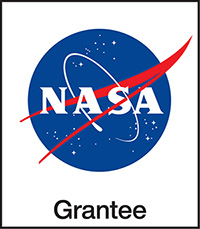4. Around the Sun: Exploring the Solar System
Learners explore the physical properties of planetary bodies in the solar system.
Setup: Prep Time 30 min
- Print and cut Planetary Cards or Optional Large Print/Translatable Planetary Cards.
*See Materials & Preparation in the Educator Guide linked above for full info.
21st Century Skills
- Collaboration
- Critical Thinking
Science Practices
- Analyzing and Interpreting Data
Learners Will Do
- Get information about different planetary bodies in our solar system.
Learners Will Know
- Scientists study places in the solar system and compare these places with Earth.
Connecting Across Activities
- Activity 3: Water Habitability: Last time, learners explored how different living things need liquid water to survive.
- Activity 4: Exploring the Solar System: Today, learners explore the physical properties of planetary bodies in the solar system.
- Activity 5: Water in the Solar System: Next time, learners will explore the different reservoirs of water on planetary bodies in the solar system.
NASA Eyes on the Solar System app
Use the online interactive Eyes on the Solar System. As needed, use NISE’s Exploring the Solar System: Pocket Solar System or Solar System in Sound instead.
As needed, show NASA’s Dwarf Planets Overview for a fun way to support understanding of dwarf planets and why Pluto was reclassified.
To help learners understand what they will be doing during this activity, play the translatable video Sorting Instructions Instructional Read Aloud.
If it would be helpful to learners, show the translatable videos Rock, Ice, Gas Instructional Read Aloud and Water How to Science (1:39–2:16), as well as Surface, Subsurface, Atmosphere Instructional Read Aloud and Water How to Science (2:16–2:55).

